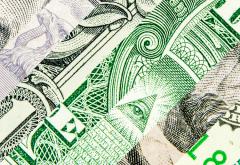
For most economic commentators the underlying driving force of inflation is inflationary expectations1. For instance, if there is a sharp increase in the price of oil, individuals may form higher inflationary expectations that could set in motion spiraling price inflation. Or so it is held.
If expectations could somehow be made less responsive to various price shocks, then over time this would mitigate the effect of a price shock on price inflation, it is argued.

Once we accept that inflation expectations are the driving force of the inflationary process, the next step is to discover a way — using central-bank policies — to make these expectations less sensitive to various price shocks. Once this happens, then expectations have become “anchored,” and various price shocks such as sharp increases in oil or food prices are likely to be of a transitory nature. This means that over time price shocks are unlikely to have much effect on the rate of inflation.
How To “Anchor” Inflation Expectations: Inflation Targeting
To make inflation expectations well-anchored individuals must be clear about the monetary policy of central bank policy makers. If central bankers make it clear they plan to pursue a specific level of price inflation, they believe they can manage present and future expectations for inflation. On the other hand, as long as individuals are unclear about the precise goal policymakers are aiming at with respect to inflation, it will be difficult to bring inflationary expectations to a state of equilibrium.
It’s Not Really About Expectations
This is all an interesting theory, but the key factor behind inflation is not expectations — it’s growth in the money supply.
After all, without a preceding increase in money supply there cannot be general increase in prices, which is what most mainstream commentators mea when they speak of “inflation.”













